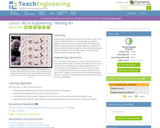
Students begin the unit exploring collaboration in the Harlem Renaissance, noting how the Harlem Renaissance was an explosion and confluence of art, music, and literature. Throughout the first half of the unit, students explore literary texts, and the art and music they inspired, to develop their ability to compare and contrast these versions and analyze the effects of techniques unique to each medium and note thematic connections. First, students examine scenes and songs from the iconic Broadway musical Shuffle Along. They experience this celebratory text, which transformed American musical theater and was created through the collaboration of Eubie Blake, Noble Sissle, F. E. Miller, and Aubrey Lyles. Students analyze the text’s literary techniques, including figurative language such as allusion and metaphor. Next, students analyze the songs’ musical techniques—volume, tone, and tempo—noting how the musical and textual techniques affect meaning and develop themes such as love persevering through tough times. For the mid-unit assessment, students examine the thematic connections between the poem “Lift Every Voice and Sing” by James Weldon Johnson and the song and sculpture inspired by the text. Students compare the different versions, analyzing the effects of the techniques unique to each medium and how they develop themes around how black Americans collaborate to survive, thrive, and create art.
In the second half of the unit, students continue exploring Harlem Renaissance literature by analyzing poems that develop themes about drawing strength from the past and persevering to achieve dreams. First, students analyze “The Negro Speaks of Rivers” by Langston Hughes, learning how the structure and figurative language develops themes about black Americans connecting to and drawing strength from their African roots. Next, students analyze the poems “Calling Dreams” and “Hope” by Georgia Douglas Johnson, noting how she uses more formal structures and figurative language to develop themes about black Americans achieving their goals despite great obstacles. For the end of unit assessment, student learning is assessed with selected and constructed response questions about the structure, language, and themes in Claude McKay’s “I Shall Return.” Finally, students compare McKay’s poem to artwork by Meta Warrick Fuller and Winold Reiss for thematic connections around drawing strength from and longing for home or Africa. The unit concludes with a collaborative discussion about how all the poems and artwork examined in the unit relate thematically.
- Subject:
- English Language Arts
- Material Type:
- Unit of Study
- Provider:
- EL Education
- Date Added:
- 05/17/2024
